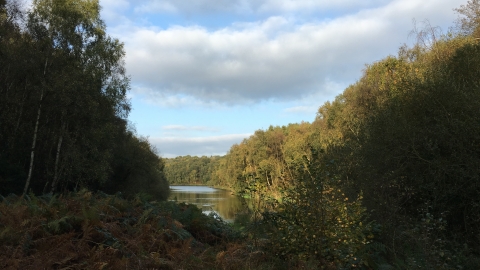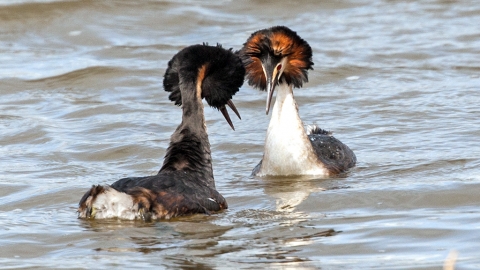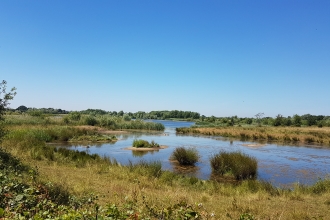Carvers Rocks nature reserve is owned by Severn Trent Water and as of 2021 has been leased to The National Trust for a 25 year period. The regional National Trust team is now looking after this site, both carrying out practical conservation work and managing the visitor infrastructure and Derbyshire Wildlife Trust do not have any practical involvement with either.
We continue to work with Severn Trent Water and National Trust in partnership sharing mutual advice and support, working together on the wider aims of a thriving living landscape and species recovery but please direct all enquiries regarding access and practical work to foremarkandstaunton@nationaltrust.org.uk or call 01332863822.

Carvers Rocks, Derbyshire Wildlife Trust

Bluebell, Jim Higham

Carvers Rocks, Louise Baker

Great crested grebe, Hilton Pete via Flickr
Location
Know before you go
Dogs
When to visit
Opening times
Open at all timesBest time to visit
Spring for bluebells and autumn for heatherAbout the reserve
Carvers Rocks lies at the southern end of Foremark Reservoir.
Its unusual habitats include marsh, alder woodland and sphagnum moss. During summer the wet marshes are a good place to see and hear reed buntings, while the reservoir fringe has breeding great crested grebes.
On the drier slopes woodland takes over and various woodland birds can be seen and heard. In the more open areas you may hear woodcock on early summer evenings.
On the tops, soils are much thinner and woodland is replaced by bracken and in places heather - the reserve has one of the last patches of lowland heath in Derbyshire and the Trust has planted further areas with heather to extend the heathland.
Habitat
Contact us
Environmental designation
Nearby nature reserves
Download our nature reserve leaflets
Take a look at the reserve map
Carvers Rocks reserve map


